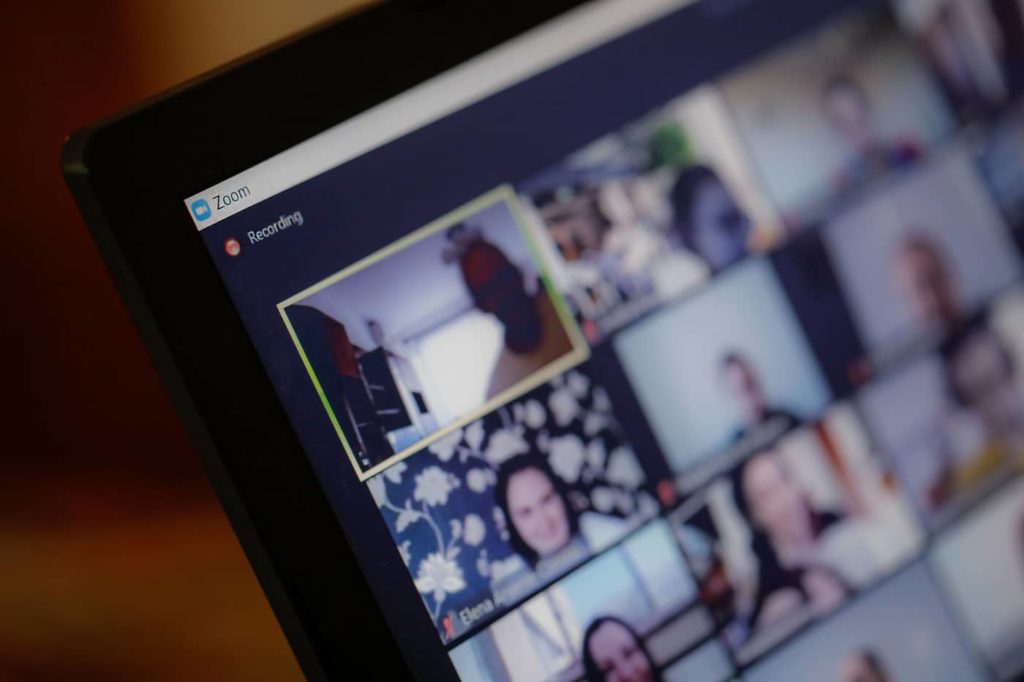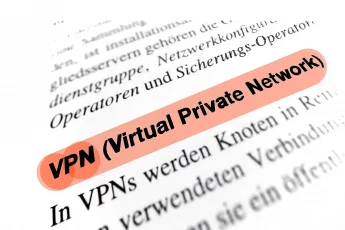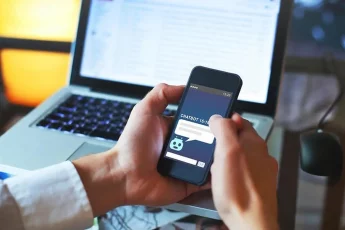Zoom is an exciting communication platform helping businesses and individuals in ensuring smooth communications for many years.
While the app had existed since 2011, it gained traction recently as it helped people communicate via online meetings. Yet, this facility also drew attention from the criminals who tried every possible trick to barge into users’ private meetings.
Thus, today, you inevitably need to secure your Zoom Chats if you really want to protect your online business communications.
In this guide, you will learn how to adjust your Zoom settings for secure communications. Plus, you will also get to know other Zoom security tips to maintain your privacy during meetings.
Essential Zoom security tips – the quick list
- Never use personal emails to create Zoom accounts
- Secure your account with 2FA
- Secure your Zoom Meetings with passwords
- Set up random Meeting IDs
- Share Zoom Meeting links carefully
- Apply strict authenticated access to Meetings
- Be careful about screen-sharing
- Enable ‘Waiting Room’ for Zoom Meetings
- Disable file sharing
- Restrict session recording
- Disable Attention Tracking
- Prefer Zoom web app instead of client apps
- Never post about Zoom Meeting details on social media
- Be wary of fake Zoom apps
- Take care of personal privacy
Tips to secure your Zoom Chats

Now that you are reading this section, it means you are aware of the Zoom security issues. And that you’re keen to find ways to get rid of them all.
Does it require any specific tips to protect Zoom Meetings? We hear you ask!
Well, it doesn’t demand any technical skills from you. Nor does it need any particular efforts regarding configuration things.
All it takes is a vigilant focus on some basic privacy practices, regardless of whether your Zoom Meetings include sensitive discussions or not.
So, let’s get started with the common Zoom security tips to protects your chats.
1. Never use personal emails to create Zoom accounts
Since Zoom is meant to serve workgroups, it essentially facilitates networking, which, sometimes, may become awkward. One such unwanted feature is the disclosure of users’ email addresses to others.
That’s why the first thing you should keep in mind when beginning to use Zoom is to never use your personal email address to sign-up. That’s because Zoom considers most email addresses, except the more common ones like yahoo.com and gmail.com, as work email. It perceives such email addresses as belonging to the same company. And thus, it exposes this contact detail to the other members in a Zoom group.
Ideally, when you’re using Zoom for communicating with your colleagues or teammates, you should use your work email address. In this way, you won’t compromise your privacy on Zoom since the participants would already know your work email address.
If that’s something you can’t do, then use an email address that you’re comfortable sharing with others anyway.
Or, try burner email addresses for that purpose if the above-mentioned workarounds don’t suit you.
2. Secure your account with 2FA
Like always, protecting your Zoom account is the key to getting Zoom security right. For this, you need a unique and robust password.
You can use a good free password generator tool to have a unique, difficult-to-break password for your Zoom account. Or, you may use the dedicated password manager tools to generate as well as save it for you.
Precisely, what’s important here is to set up a password that you don’t use anywhere else, is not easy to guess, and remains unshared with anyone.
Once done, you should apply an extra security layer on your account login via two-factor authentication.
Fortunately, Zoom introduced two-factor authentication in September 2020 for all users. Thus, you now have a dedicated setting available in your Zoom client to protect your Zoom Meetings.
3. Secure your Zoom Meetings with a passcode
Another way to secure your Zoom chats is to set up a passcode for every Zoom Meeting.
Thankfully, Zoom offers this feature by default to all users. Thus, you can easily protect your Meetings right when planning one. You can share this passcode with others (via secure means) to let them join the meeting. This will prevent snoopers and perpetrators from barging in even if they get to know the Meeting link.
Nonetheless, make sure to protect this passcode as best as you can. The entire effort of protecting your Meeting with a passcode will go in vain if this passcode gets exposed.
As a safety practice, try not to share the passcode with others at the same time you share the Meeting URL. If possible, use different apps to minimize further the chances of accidental exposure of this detail to cybercriminals.
4. Set up random Meeting IDs
The next thing to improve security on Zoom Meetings is to set up a random Meeting ID.
Though, you may not like this idea because remembering random Meeting IDs sounds difficult. However, they add to your security.
In simple words, a random Meeting ID, if leaked, won’t risk your future Meetings. However, despite being convenient, a personal Meeting ID poses a risk if it ever attracts the attention of a snooper.
5. Share Zoom Meeting links carefully
A basic problem, for now, with Zoom Meetings is that you need to share the Meeting links with others to let them join. Since this link is the main source through which users would participate, you must ensure sharing it safely.
For this, the first thing you should do to secure your Zoom chats is to never use social media for it. Instead, you may use your work email or secure messaging apps, like Signal, to share this link.
But what if I’m going to use Zoom for a public event? We hear you ask!
Well, you might have to rely on social media in that case. Like, you may share the Zoom Meeting link on your Facebook profile or page/group. (Though we don’t recommend it due to the underlying privacy risks.)
But you can apply the Zoom safety tips that we are going to explain below to prevent unsolicited users from barging in. Also, you can apply passcodes to your Meetings. But make sure you keep these passcodes safe.
For example, you can make it a requirement for every user interested in joining the event to ask for the passcode personally from you. In that case, you can switch to the messenger for one-to-one chats to share the code. That will also help you keep a log of who and how many users would be there in your Meeting.
6. Apply strict authenticated access to Meetings
The next important thing to secure your Zoom chats is to limit access to authenticated users only. This will automatically prevent anyone attempting to join the meeting that you haven’t authorized.
You can find this setting under the “Schedule Meeting” settings. Simply enable the “Only authenticated users can join meetings” option. You can then control who should join the meeting. At the same time, the setting in itself restricts users from joining unless they sign in to Zoom via an email address registered with you.
7. Be careful about screen-sharing
Screen-sharing is a great feature in Zoom that has made it a favorite app among the business community. Participants in a meeting can share their screens during calls to let others view the information they want to share. This is particularly useful for sharing presentations, worksheets, and quick demo videos.
However, the same feature was the one that went under attack during the Zoombombing incidents.
So, if you don’t want to experience that misery of watching weird unsolicited videos, better limit this feature.
You can adjust screen-sharing settings when setting up the Zoom Meeting. You can either limit it to the host if you find the need to share your screen during the meeting. Or, you may choose other options, but make sure that you really need it before turning this option on.
8. Enable ‘Waiting Room’ for Zoom Meetings
Moving further with the best practices for secure Zoom meetings, the next recommendation is about enabling “Waiting Room.”
Zoom launched this feature to give more control to the host regarding the meeting participants.
With an active “Waiting Room,” users can click on the link and can wait for you to approve before joining in. Thus, even if you arrive late to the meeting, you don’t have to face any strangers there. You can simply review the list and approve each user individually.
Following the Zoombombings fiasco, Zoom has enabled this feature by default. So, you don’t have to worry about meddling with this setting unless you had turned it off earlier intentionally.
9. Disable file sharing
The next in our Zoom security tips is to disable file sharing.
Now why’s that important, we hear you ask!
Well, sharing malicious files is a key way to spread malware. If a perpetrator gatecrashes into your meeting and starts sharing malicious files, it’ll cause great damage to the users by the time you would control the perpetrator’s access.
So, why not prevent these attacks in the first place by turning off this feature?
10. Restrict session recording
Another thing against which you need to secure your Zoom chat is session recording.
Though, it’s a great feature. However, if fallen into the wrong hands, this may pose a serious security threat to you as well as all other Meeting participants.
You can find this option when using the Zoom web app. Unfortunately, the Zoom client apps often lack this setting. So, if you wish to disable this setting, switch to the web app. (It’s also useful for your own privacy. We’ll discuss it in detail below.)
However, keep in mind that disabling or restricting session recording merely controls the Zoom app setting. You can’t really control if someone starts using a third-party service or other means to record the session sneakily. Hence, the risk, although minimal, continues to exist.
11. Disable Attention Tracking
Well, this one may rather sound much more important to the Meeting participants than the hosts. Also, this is more related to your privacy on Zoom instead of securing Zoom chats.
Basically, Zoom’s Attention Tracking feature allows the users to see if someone isn’t really focused on the meeting. Obviously, you can’t read someone’s mind or eyes. But you can certainly track whether the other person has your Zoom screen in focus during active sessions via an indicator.
While that’s seemingly okay, but, of course, it’s a privacy breach unless absolutely necessary, like if the host has made it a must.
So, to secure your Zoom chats without compromising your personal privacy, you should turn it off.
Though, for this, you need to use the Zoom web app. You can’t control these settings via the native clients.
12. Prefer Zoom web app instead of client apps
We have just listed some tips to secure your Zoom chats that are typically available in the web app. So that’s a basic reason why we urge you again to use the web app.
Besides, Zoom’s client apps, regardless of the platforms they support, usually exhibit glitches and security vulnerabilities.
For instance, during the last year, Zoom fixed multiple bugs at different times. The latest being a patch for a screen-sharing glitch that exposed sensitive data.
Plus, Zoom hasn’t gone through robust security audits to back their security measures. For now, it’s unclear whether and how they collect and share users’ data with third parties.
With client apps, the developers often get vast control of users’ devices compared to the web apps where a user has more authority.
Therefore, to use the features exclusively available in the web app, avoid potential exploitation due to bugs, and keep your data secure, we advise you to stick to the web app to your best.
13. Never post about Zoom Meeting details on social media
While Zoom was already in use for years, it happened only since 2020 (after the COVID-19 pandemic) that people started sharing screenshots of Zoom Meetings on social media.
We do appreciate this gesture to promote the work-from-home trend. However, things started getting wrong as this practice exposed sensitive details to every good or bad internet user.
While you can’t correct past mistakes. Yet, you can certainly secure your Zoom chats in the future from Zoombombings and other threats.
All you should do is never ever share any detail of your Zoom Meetings, especially screenshots, on social media platforms like Facebook and Twitter.
Today, working online has become a global trend. So, you really don’t need to display your work efficiency to others. Nor do you have to persuade others to follow the trend by posting such things on social media.
14. Be wary of fake Zoom apps
Criminal hackers never miss any trend to exploit to target people. Continuing with the same, they started deploying fake apps impersonating popular video conferencing services such as Zoom, Webex, and more.
Because of their identical names and app layouts, these apps trick users into downloading them. Whereas the users indirectly fall prey to malware and other cyber attacks.
Therefore, make sure to download the verified Zoom apps only from the Google Play Store or the Apple App Store. You can also find genuine links to these apps through Zoom’s website.
15. Take care of personal privacy
Last but the most important thing among all Zoom security tips is to protect your personal privacy.
Frequently, you need to use Zoom at home for online meetings. Therefore, keep your surroundings as clean as possible from your personal stuff. You don’t want to let others know you have bought a new wardrobe or have changed your bedroom settings.
Besides, you don’t want Zoom itself to collect your data unnecessarily. Thus, try to adjust the settings in a way to allow minimal data exposure to the app as well as to others.
Conclusion
There you have all the information you needed if you’ve been wondering ‘how do I improve Zoom security.’
Zoom has emerged as the primary means of online communication for business use, especially for video conferencing. However, the convenience and ease of use of this app are what have made it vulnerable.
Nonetheless, if you follow the basic tips we shared, you can easily secure your Zoom chats not only from the unknown perpetrators but from the other participants of a meeting as well as the developers.
FAQs
Initially, Zoom was an entirely insecure platform with no privacy measures in place. Probably, the Zoom developers hadn’t expected it to appear on the radar of the cybercriminals. However, following the Zoombombing incidents in the wake of the COVID-19 pandemic, Zoom applied numerous security measures, including 2FA. Also, they rolled out end-to-end encryption for chats. So, the app has become much safer now than before. Though you won’t be wrong to doubt its privacy yet since these features, mainly, Zoom encryption, are too new to be sure about.
Yes, you can enable end-to-end encryption typically for Meetings as well. That will make your sessions secure and private. Plus, using the tips above, you can further enhance your privacy. Still, if you need to share sensitive details, perhaps, you can use alternative platforms or IM apps like Signal to protect your data.
While Zoom has improved considerably regarding security, still, the app lacks enough evidence of safety. Also, the back-to-back bugs and the growing interest of criminal hackers in this app make you vulnerable to cyberattacks.
To be precise, you not only risk yourself to attacks via bug exploits, Zoombombings, unnecessary tracking, or even the accidental exposure of your sensitive details publicly, such as the Zoom Meeting IDs. While the app is undergoing improvisations, you can’t really trust it for your sensitive business discussions.
Apart from the security and privacy issues, using Zoom has its own cons too. These include high subscription costs, lack of control on commenting, unstable video quality, and inconsistent file storage. That adds to your effort. You really need to be sure of its usefulness for your business in the long run before investing in this app.






